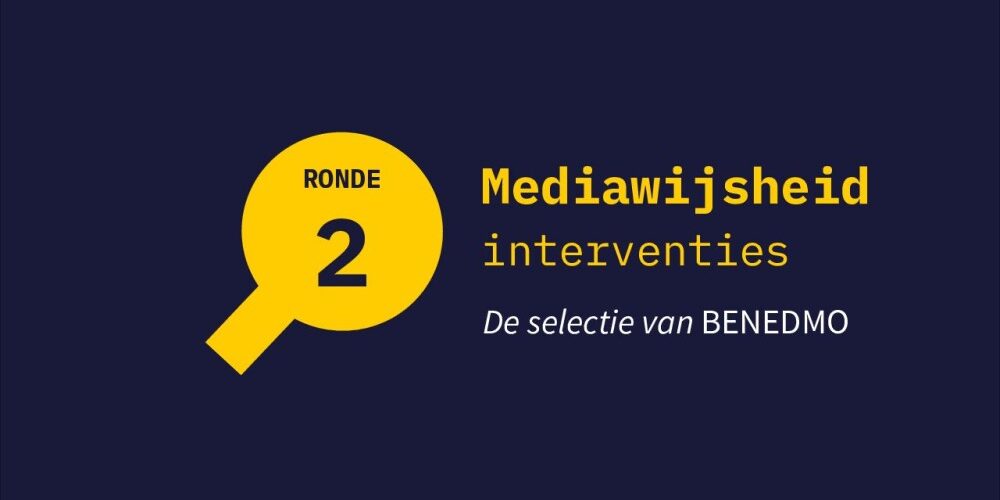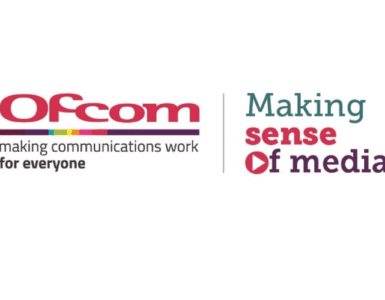Earlier this year, BENEDMO published their Top 10 media literacy interventions, consisting of usable Dutch-language materials (teaching packages, games, videos, etc.) that media literacy professionals can implement in their programs on disinformation. BENEDMO has been working on an update and expansion of this inventory.
BENEDMO recommends the following 13 media literacy interventions :
- News in the Classroom Netherlands (Lesson modules) (Dutch)
- #Fortune tellers (Dutch)
- MBO Media Literacy (Media Literacy Lesson Packages) (Dutch)
- The Chatterbox (Dutch)
- The Short Course in Manipulation (Dutch)
- News in the classroom Flanders (Lesson packages) (Dutch)
- Harmony Square Game (15+ languages)
- Media Logic in the Classroom (SchoolTV) (Dutch)
- Confusing News (Dutch)
- The Ugly Children’s Club (Dutch)
- The M Scale (Dutch)
- Cat Park Game (6 languages)
- Media Literacy Quiz (Dutch)
About the selection procedure
During the work on the previous inventory, new, promising materials were released that had not yet been included in this exploration. The update concerns materials related to disinformation, which were released after the creation of the first database (July 2022). The expansion includes materials that target “news literacy.” A list of 18 interventions was created through research and inquiries from media literacy experts within the BENEDMO consortium. Because it concerns a Flemish-Dutch collaboration, both Flemish and Dutch interventions are included in this inventory.
Although there are several overviews of (educational) offerings, it is not easy for a teacher, librarian, youth worker or other media-savvy professional to gain insight into the usefulness of all these interventions. In addition, there is no generally recognised quality framework or quality mark with which these types of materials are assessed. To help them, BENEDMO selected a number of interventions that deserve a recommendation based on certain criteria and based on practical experience from the BENEDMO network. These criteria are:
- The material is free. This means that it can be used and/or downloaded without payment, in some cases with a special login. This means that financial resources do not play a role in the accessibility of educational teaching materials.
- The material is easy to use. This means that it can be used immediately, has a clear manual and does not require long training.
- The material is recognisable for the target group. Topics and definitions are made understandable and presented in an accessible way using images or cases that match the experiences of the intended target group.
- The material can be used in various settings. This means that it can be used in schools, during 1-on-1 guidance and youth work.
- The material can be adapted to your own context (by teacher, youth worker, librarian, etc.). For example, a creative commons license is essential for teaching materials and posters. For videos, the videos are “shareable”.
- The material is timeless. This means that the intervention is not specifically tied to one event, such as the Corona crisis. However, such cases can be given as examples.
In addition to the above criteria, interventions were also rejected that did not appear to sufficiently relate to news literacy or disinformation, such as tools about phishing and safe internet use. Materials that do not provide guidance for media literacy professionals and teachers have also been eliminated.
About the assessment procedure
The 13 remaining interventions were submitted to a panel of education and media literacy experts from the BENEDMO network. The sounding board group was asked to critically examine the materials and ask themselves the following questions:
- Definition: Do you think definitions related to disinformation are described correctly in this material?
- Usability: Do you think this material can be easily used by the target group and their supervisors?
- Target group: Do you think this material suits the intended target group?
- Working method: Do you think this material uses a working method that appeals to the imagination? Think of indicators such as interactivity, fun and challenge?
- Learning objectives: Do you think the material contributes sufficiently to the intended learning objectives?
- Competencies: Do you think this material contributes to the development of media literacy competencies, such as understanding, reflecting and discussing media?
The members of the sounding board group awarded points (1 to 5) for each question. They explained their scores in writing. Material that scores a 3 or higher is added to the BENEDMO selection. Experts did not review materials that they themselves contributed or developed.
Sounding Board
- Sanne Hermans: Project employee Mediawijs
- Tim van Lier: Product Owner VRT education
- Niels Wanner: Editor Network Media Literacy, Teacher ‘T for Tech’
- Dominique Noordhuis: Developer of educational offerings for Sound and Vision
- Roos Lambooij: Developer of educational offerings for Sound and Vision
For more information and the full article in Dutch (use Google translate): https://benedmo.eu/2023/12/04/de-mediawijsheid-interventies-de-selectie-van-benedmo-ronde-2/














